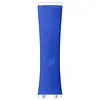What's inside
What's inside
 Benefits
Benefits

No benefits
 Concerns
Concerns

No concerns
 Ingredients Side-by-side
Ingredients Side-by-side

Water
Skin ConditioningC13-15 Alkane
SolventGlycerin
HumectantHydrogenated Polyisobutene
EmollientPolyglyceryl-3 Polyricinoleate
EmulsifyingLauroyl Lysine
Skin ConditioningCaprylic/Capric Triglyceride
MaskingPropanediol
Solvent1,2-Hexanediol
Skin ConditioningDisteardimonium Hectorite
StabilisingMagnesium Sulfate
Panthenol
Skin ConditioningLinoleic Acid
CleansingPhospholipids
Skin ConditioningPhytosterols
Skin ConditioningBisabolol
MaskingZingiber Officinale Root Extract
MaskingWater, C13-15 Alkane, Glycerin, Hydrogenated Polyisobutene, Polyglyceryl-3 Polyricinoleate, Lauroyl Lysine, Caprylic/Capric Triglyceride, Propanediol, 1,2-Hexanediol, Disteardimonium Hectorite, Magnesium Sulfate, Panthenol, Linoleic Acid, Phospholipids, Phytosterols, Bisabolol, Zingiber Officinale Root Extract